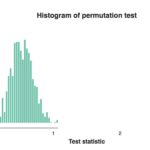Dealing with large datasets across multiple Excel sheets often involves identifying duplicate entries. Comparing these sheets for identical records can be challenging, especially with data spread across various columns and rows. This comprehensive guide explores five effective methods to compare and manage duplicates between two Excel sheets: VLOOKUP/COUNTIF/EXACT functions, conditional formatting, Power Query, external tools, and visual checks.
Using Excel Functions to Find Duplicates
Excel provides built-in functions like VLOOKUP, COUNTIF, and EXACT, designed for finding, counting, and comparing data:
VLOOKUP Function
VLOOKUP (Vertical Lookup) searches for a specific value in the first column of a range and returns a value in the same row from a specified column. To find duplicates:
- Use the formula:
=VLOOKUP(lookup_value, table_array, col_index_num, [range_lookup]). Setrange_lookupto FALSE for exact matches. For example:=VLOOKUP(A2,Sheet2!$A$2:$A$5,1,FALSE). - Referencing another sheet: Use
SheetName!CellRange(e.g.,Sheet2!A1:A10). For separate workbooks, use'[WorkbookName.xlsx]SheetName'!CellRange.
COUNTIF Function
COUNTIF counts cells within a range that meet a given criterion. To find duplicates:
- Use the formula:
=COUNTIF(range, criteria). For example:=COUNTIF(Sheet2!$A$2:$A$5,A2). A result greater than 0 indicates a duplicate.
EXACT Function
EXACT compares two text strings and returns TRUE if they are identical, FALSE otherwise.
- Use the formula:
=EXACT(text1, text2). For example:=EXACT(A2,Sheet2!A2). This compares specific cells, not ranges.
Finding Duplicates with Conditional Formatting
Conditional formatting highlights cells based on specified rules. To highlight duplicates:
- Select the data range.
- Go to Home > Conditional Formatting > New Rule.
- Choose “Use a formula to determine which cells to format.”
- Enter the formula:
=COUNTIF(Sheet2!$A$2:$A$5,A2)>0. - Set the desired formatting (e.g., yellow highlight).
- Manage and modify rules using the Conditional Formatting Rules Manager.
Leveraging Power Query for Duplicate Detection
Power Query, a powerful data transformation tool, allows for advanced duplicate identification:
-
Import data from both sheets as tables (Right-click > Get Data from Table/Range).
-
Merge the tables (Data > Get Data > Combine Queries > Merge). Select the key columns for comparison and choose “Inner” join.
-
Remove unnecessary columns and load the results to a new sheet (Close & Load).
Utilizing External Tools and Add-ins
Tools like Microsoft’s Spreadsheet Compare offer side-by-side workbook comparison, highlighting differences and duplicates. Add-ins like “Duplicate Remover” automate the process. Access add-ins through Insert > Get Add-ins.
Visual Comparison for Duplicate Identification
For smaller datasets, visually comparing sheets can be helpful:
- Use View > Arrange All to display sheets side-by-side or vertically.
- Manually scroll and compare data. This method is less efficient for large datasets.
Conclusion
Identifying duplicates across Excel sheets is crucial for data accuracy and management. Utilizing the techniques outlined in this guide—ranging from basic functions to advanced tools like Power Query—empowers users to efficiently manage and maintain data integrity. The optimal method depends on the dataset’s size, complexity, and the user’s proficiency with Excel’s features. By mastering these techniques, users can streamline data analysis and ensure data quality.
